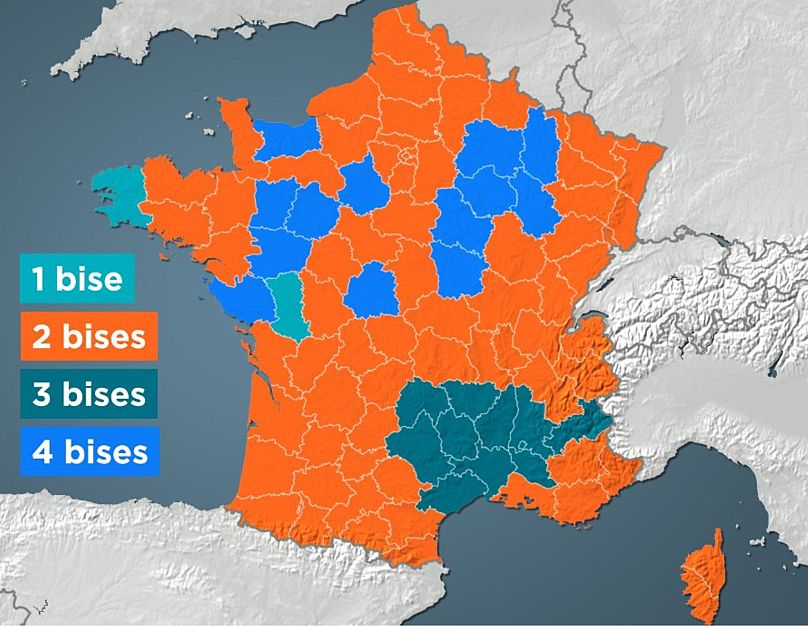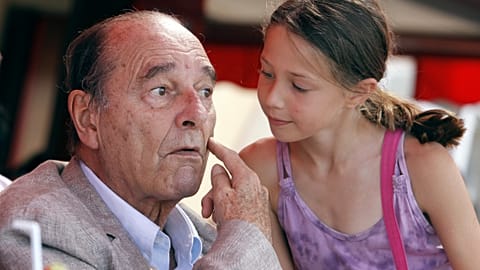French people often do 'la bise' to greet each other - but the pandemic has endangered this national habit.
Hugging, shaking hands, kissing… Greeting someone can take many forms depending on the context and culture. In France, one of the most popular greetings is known as "la bise".
But, three years on from France's lockdown, has the pandemic irreversibly endangered this habit à la française?
What is la bise?
Although you might not have heard the term before, you'll be familiar with this very French way of saying hello.
"La bise" is the greeting where a person gently bumps cheeks against another person, while making a kissing sound (basically, an ‘air kiss’). "La bise" literally just means "kiss" in French.
The way la bise goes depends on the person. Some don’t make any sound at all. Others actually kiss the other person’s cheeks.
The most common number of bises is two, but it can range from one to four. If you're a fan of giving four bises, arriving late at a party and having to say hi by giving every guest four kisses can be a nightmare.
And of course there's always the awkward situation when two people don’t present the same cheek. The most common one is the right cheek, but this actually depends on the region of France you're from.
Do you always do la bise to greet someone in France?
That’s a tricky one. With friends it’s almost a no-brainer: typically you do la bise to say hi. If friends introduce you to their friends, then la bise is also appropriate.
In the workplace however, it really comes down to the company’s culture. Shaking hands when meeting new colleagues or associates is commonplace. Before the pandemic, many colleagues would do la bise on a daily basis –but this tradition has not necessarily made its comeback with the easing of social distancing measures. In many workplaces, a general "hello" when arriving in the morning remains the prevailing way of acknowledging your co-workers.
Family members naturally do la bise to greet one another, except spouses that generally give each other a quick kiss on the lips. When introduced to your in-laws, la bise is mostly suitable – except if the person clearly wants to shake your hand.
La bise used to be gendered, but this barrier is fading away. Men from older generations, more often than not, still shake hands when greeting one another, while a man and a woman mostly do la bise. Two women almost always do la bise.
Foreigners and la bise
The greeting technique can at times be hard to master, even for French people. But for foreigners, la bise can be seen as extremely bizarre and lead to awkward social situations.
James Thomas, from the UK, vividly remembers a split second when he panicked after he thought a French friend wanted to kiss him “he suddenly lunged towards my face with his mouth… and luckily I realised he was just going for la bise before I had a chance to make it awkward!”
Meanwhile French people also end up in awkward situations if they're too used to giving la bise.
Frenchman Christopher Pelletier recalls his Erasmus year abroad, when German students invited him to their party: “When I got there I did what I would normally do in France, and did la bise to everyone. People stared at me and exchanged uncomfortable looks, probably wondering why a stranger was invading their personal space – or worse, was straight down flirting with everybody! Needless to say, I was mortified when I realised my mistake, and shook hands for the rest of the evening, no matter how strange it felt to me”.
Is la bise on the way out?
Gen Z tends to do la bise less often than their older counterparts, preferring fist-bumping, or a simple "hi". The pandemic weighs on the generational gap, as many were barely teenagers when the pandemic hit and la bise was not yet part of their social norms.
With the pandemic and the halt of physical contacts, many, especially women, have also expressed their relief about the traditional bise being replaced by less invasive greetings.
In the workplace, the pandemic has definitely impacted how co-workers greet each other. A recent survey found that in 2020, when the first lockdown began, 46% of people said they would not resume doing la bise when going back to work. By 2022, they were 90%.




















